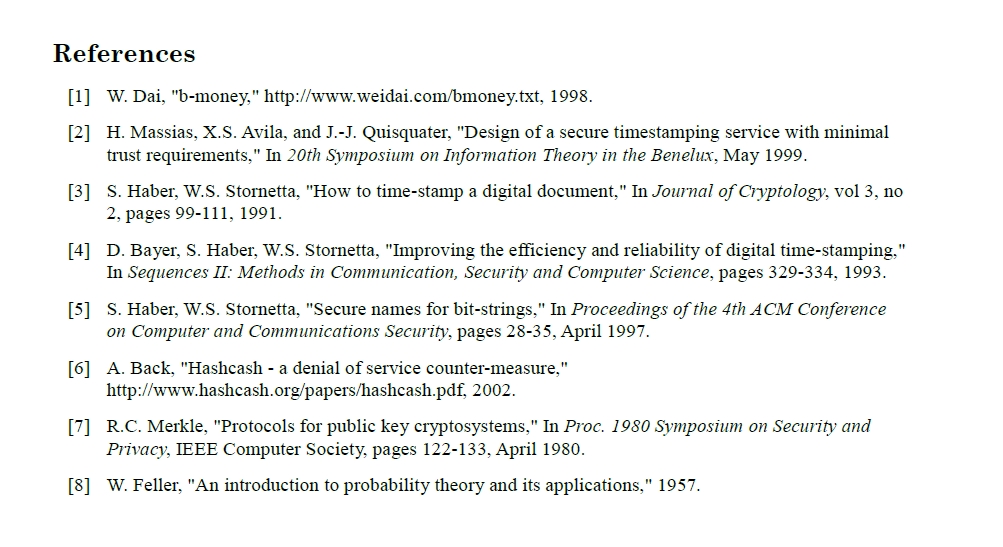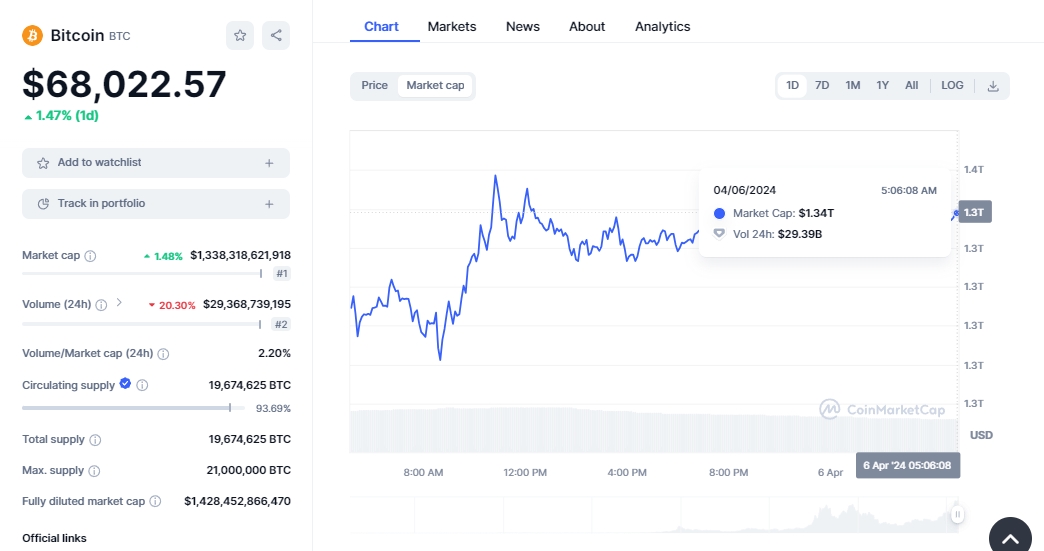\ If you look his name up on a search engine like Google or Bing, you’ll likely find, first, a photograph of an old Japanese man in a suit, with glasses. Funny enough, that’s not actually Satoshi Nakamoto —or at least, not the Bitcoin creator. Not that we’re aware of. Because that’s the thing: we don’t really know who “Satoshi Nakamoto” is, or who he or she was. We just know him/her through Bitcoin, and there are a lot of unanswered questions about his/her (or their?) identity.
\ The man in the photos in the search engines is Dorian Satoshi Nakamoto, an American-Japanese physicist living in California. Due to a famous report in the magazine Newsweek in 2014, he was signaled as a main candidate to be the Bitcoin creator. He’s repeatedly denied this, though. And he’s far from being the only likely suspect. Therefore, no, we don’t have a face or voice to give to “our” Satoshi, and we don’t even know if that’s their real name.
\ What we know about him (let’s assume this is the right pronoun) is that he’s a fervent cypherpunk. He shared his creation first in 2008 with other Libertarian programmers just like him. This way, he got the help of the experienced Hal Finney and others, like Laszlo Hanyecz (the first person ever to make a real-world purchase with Bitcoin), to improve the software in its early stages. Every communication was via encrypted emails, so, no luck with their identity there.
\
Bitcoin Origins
As you may know, Bitcoin is the first-ever cryptocurrency. However, it’s not the first try. Satoshi’s fellow cypherpunks have been trying to create a new form of digital cash without middlemen since well before the 21st century, with different degrees of success or, let’s say, “useful” pieces to complete the puzzle. Satoshi did just that: complete the puzzle started by his predecessors.
\ At the end of the Bitcoin whitepaper, released in 2008, we can find at least two other cypherpunks as references: Adam Back and Wei Dai. The first one proposed the Hashcash system in 1997 (which inspired the crypto mining system), while the second one shared its own vision of a potentially decentralized digital coin in 1998. These early attempts needed some fixes, though, and Satoshi did his best to put everything together.
\n 
The result was the first functional digital money without a single central authority to control it. Instead, it relies on a decentralized ledger that records all transactions across a network of nodes (computers) controlled by different parties worldwide. And anyone could download and handle their own node, and/or become a miner to create and receive new coins and create new blocks.
\ When someone makes a Bitcoin transaction, it’s broadcasted to this network, where it’s verified by network participants. The miners use powerful computers to solve complex mathematical puzzles, and when they successfully solve a puzzle, they add a new block of transactions to the blockchain. In return for their efforts, miners are rewarded with newly created bitcoins, as well as transaction fees paid by the included transactions.
\
Bitcoin Impact
By relying on this mostly decentralized (more decentralized than anything before it) system, anyone could send and receive transactions without any requirements (except Internet connection) or geographical and legal restrictions. Bitcoin was launched in January 2009 for this purpose, but its use didn’t start spreading until Laszlo Hanyecz bought a pizza with 10,000 BTC back on May 22, 2010 —May 22 is now celebrated as “Bitcoin Pizza Day”.
\ By February 2011, the Bitcoin price reached parity with the US Dollar (USD). Still, nobody had much faith in it. Few adopters, companies, and miners here and there, and a market cap of around $1.6 million [CMC]. Fast forward to April 2024, Bitcoin has around 18,012 nodes worldwide [BitNodes], a market cap of over $1.3 trillion, over 32,540 venues and services worldwide accepting it as a payment method [CoinMap], around 37,216 Bitcoin ATMs in 72 countries [Coin ATM Radar], and a whole country (El Salvador) officially adopting it as legal currency —to use and pay for everything within its borders.
\
\

\n Who is Satoshi?
Who made all that possible? Not to mention the whole crypto industry that followed behind, with over 2.4 million alternative digital coins (altcoins) and over 11,132 crypto companies and projects worldwide [Golden]. It’s difficult not to be curious about the man, woman, or group that laid the groundwork for a $2.5 trillion industry to thrive. So, theories and candidates abound.
\ One prominent figure is, as we mentioned above, Dorian Nakamoto. The primary clue that led to his misidentification as Satoshi Nakamoto was a statement made by Dorian's brother, suggesting that he had been involved in classified engineering work for the government. This, combined with his background as a computer engineer and his birth name, led the reporter to conclude that Dorian was the creator of Bitcoin. He’s denied it adamantly, though.
\ https://youtu.be/BoboO6QPGow?feature=shared
\ Another candidate is Nick Szabo, a cryptographer and also a cypherpunk who proposed a similar concept to Bitcoin called "BitGold" in 1998. While Szabo's work has similarities to Bitcoin's design, he's repeatedly denied being Satoshi Nakamoto.
\ A more polemical contender is Craig Wright, an Australian computer scientist who publicly claimed to be Satoshi Nakamoto in 2016. Despite his assertions, he's failed to offer conclusive proof about it and instead has been picking legal fights with numerous members of the community. In March 2024, after unraveling the available evidence, a UK High Court officially declared that he's not, actually, Satoshi Nakamoto.
\ On the other hand, Hal Finney, a cryptographer, cypherpunk, and one of the earliest contributors to Bitcoin has been suggested as a possible candidate. Other names in the long list of candidates are Adam Back, the Japanese mathematician Shinichi Mochizuki, the Finnish economic sociologist Vili Lehdonvirta, the software engineer Gavin Andresen (the first Bitcoin lead developer after Satoshi), the founder of Cardano, Charles Hoskinson, and even the businessman Elon Musk.
\ So far, every candidate but Wright has denied being Satoshi. Using his “official” communication channels and email, Satoshi stayed involved in the Bitcoin development until mid-2010, when he handed the project to a team of open-source developers led by Andresen. And just like that, his persona disappeared to likely not be seen again. Not even his immense fortune in Bitcoin (around one million BTC) has been moved, ever.
\
Evolution of Decentralized Money
We can say that Satoshi Nakamoto created the first taste of financial freedom for everyone and, as a true cypherpunk, refused to privatize his software. Bitcoin isn’t perfect, though. The energy-intensive coin mining is especially concerning since it could be a threat to both decentralization (and censorship resistance) and the environment. Miners can cherry-pick and censor transactions, and, in an extreme colluding attack, they could even take over the network.
\ Meanwhile, the mining process takes around 166.8 TWh annually, which is more than numerous countries worldwide would take in a year as well [CBECI]. That, in exchange, produces around 84.52 MtCO2e annualized greenhouse emissions. Again, more than some countries.
\

\ This consensus model not only eliminates the energy-intensive mining process but also eliminates the miner's role as middleman and enables a higher level of user control. Therefore, Obyte's DAG-based architecture presents a potential evolution beyond Bitcoin's mining model. With its focus on decentralization, Obyte represents a potential growth in the cryptocurrency space, offering a glimpse into what the future of digital currency might look like.
\
\
:::tip Read more from Cypherpunks Write Code series:
John Gilmore & EFF \n Phil Zimmerman & PGP
:::
\
:::info Featured Vector Image by Garry Killian / Freepik
Photograph of the statue dedicated to Nakamoto in Budapest (Image by Fekist / Wikimedia)
:::
\n
 Psst! Do you accept cookies?
Psst! Do you accept cookies?
What's your thoughts?
Please Register or Login to your account to be able to submit your comment.